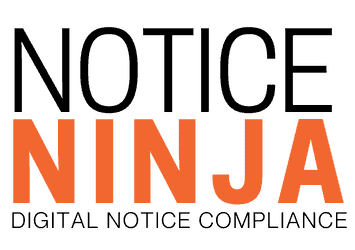Yes, NOTICENINJA is corporate tax notice compliance software that automates key workflows including notice assignments. The platform employs a rule-based system that can manage multiple level rules and ensure notices are directed to the appropriate stakeholder. As a result, you’ll never have to worry about notices being misdirected or slipping between the cracks.

Are Hidden Inefficiencies Costing You in Tax Notice Compliance?

20 March
Most tax and payroll teams assume their tax notice workflows are working well enough—until a backlog, penalty, or missed deadline forces a closer look.
Without clear visibility into inefficiencies, organizations lose valuable time, risk compliance penalties, and drain resources without realizing the full impact. Whether it’s sifting through emails for notices, manually tracking deadlines, or struggling with multi-jurisdictional compliance, outdated processes can quietly cost a business thousands of dollars per year.
That’s why we created the Tax Notice Resolution Audit Tool—a simple way to assess where your team stands and build a strong case for improvement.
Where Tax Notice Management Breaks Down
Many teams don’t recognize the warning signs of an inefficient compliance process. Some of the most common pain points include:
- Missed or delayed resolutions – Tax notices sit unresolved for weeks or months, leading to penalties and increased financial risk.
- Siloed email tracking – Notices get lost in inboxes, making it difficult to monitor deadlines and track historical records.
- Manual workflows that slow teams down – Spreadsheets and disjointed systems require extra time and increase the risk of errors.
- Lack of visibility across jurisdictions – Multi-state or multi-agency compliance becomes difficult to track, increasing the chance of missed notices.
- Growing resource drain – Skilled employees spend more time on administrative work than on high-value, strategic tasks.
If any of these sound familiar, it’s time to evaluate the true cost of your current approach—because inefficiencies don’t just slow things down; they impact compliance, financial performance, and stakeholder confidence.
How the Audit Tool Helps You Measure the Impact
The Tax Notice Resolution Audit Tool is designed to help you take an objective look at your tax notice management process by:
- Identifying gaps in automation and tracking – Determine whether your team relies too heavily on manual processes like email-based tracking or spreadsheets.
- Benchmarking against best practices – Compare your resolution timelines, backlog levels, and prioritization methods with industry standards.
- Highlighting compliance risks – Pinpoint the biggest vulnerabilities in your process, from escalating penalties to missed notices.
- Facilitating group decision-making – Make it easier to align tax, payroll, and finance teams on what needs to change.
What Comes Next? Turning Insights Into Action
An audit is only useful if it helps move your organization toward tangible improvements. Once you complete the assessment, here’s how to use the results:
- Analyze the Score – Did your process score well, or are there clear areas for improvement?
- Prioritize Solutions – Identify which inefficiencies—such as slow email tracking, manual reporting, or disorganized workflows—are costing your team the most time and money.
- Assess the ROI of Automation – Explore how automation can eliminate these pain points, improve compliance, and free up valuable resources.
- Build a Business Case for Change – Use your audit results to justify investing in a tax notice management solution that scales with your needs.
Get a Clearer Picture of Your Tax Notice Management Today
Without a clear benchmark, it’s hard to know whether your team is keeping up with compliance or falling behind. The Tax Notice Resolution Audit Tool gives you a simple way to evaluate your process, uncover hidden costs, and take the next step toward efficiency.
Download the Audit Tool today and find out where you stand.
RELATED POSTS
- Measuring and Improving Your Notice Compliance Score
- Why Delaying Tax Notice Automation Costs More Than You Think
- The Ballad of the Notice Spreadsheet: A Tax Pro's Reluctant Farewell to Excel
